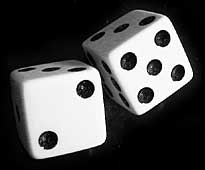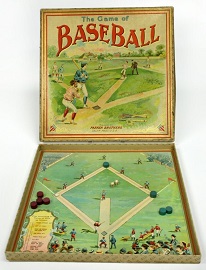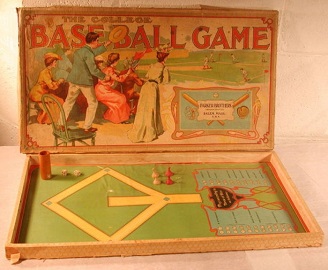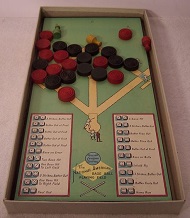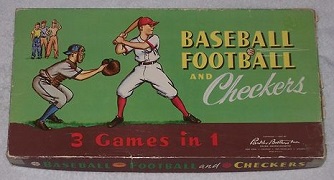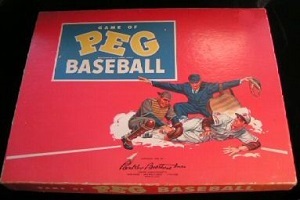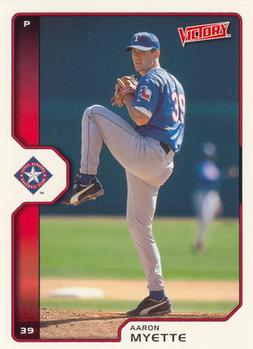---Home----Intro----Games ----Articles---- Forum Policy----Forum----Links----Awards----Contact---- |
|
.... |
|
.... |
|
|
|
|
|
A word, first, if we may, about the disappearance of tradition, and, in particular, traditional
entertainments... we interrupt your regularly-scheduled programme for a brief rant...
The cranky old buzzards who run this website and Forum also frequent many other game, card,
antique, and sports memorabilia forums -- and when we see a post in any of them, as we often do,
titled something like "Question about ancient baseball game" or "Help me identify antique card,"
we naturally get a little revved up, expecting that we can either provide the answer, or that someone
else will have an answer we don't and that we ourselves will thereby actually learn something.
Most of the time, the "ancient baseball game" or "antique card" turns out to be something from
the 1980s or '90s, which makes the cranky old buzzards here feel just a little older and crankier.
We're all bifocal-wearing longtime AARP members here, but down deep we're just superannuated
adolescents. That may go some ways toward explaining our fascination with tabletop baseball,
which we first encountered as boys back in the 1950s, and with "dice baseball" in particular, to
which we were introduced in the 1960s. You know, the '50s and '60s, which for most Americans
under the age of 40 means the Dark Ages, something around the time General Washington and
General Lincoln led the US and our Japanese allies to victory over President Hitler of England
during the Civil War.
Hey, now before you jump to the conclusion that this is just another tired, cliche-filled "why,
back in my day..." dirge about how things nowadays ain't the way they usedta be, by cracky, and
that we're completely out of touch with anything that's happened since Coolidge was President,
well, hold yer horses there, missy. Dag nabbit. No need to send us telegrams or ring us up on
our rotary-dial phones to complain. We're presenting dice baseball, but we'll stipulate that we
have in fact played computer baseball games, and sports games on the Wii, and the latest version
of Halo and whatnot, and we've quite enjoyed them, amongst ourselves or playing with our
nephews and nieces and grandkids. There's a great deal to be said for the graphics and sound
effects and the bells and whistles and blinkenlights. We would contend, however, that whatever
entertainment they provide -- and that's no small thing, of course -- they all lack the intellectual
stimulation offered by a good boardgame. But then again, why wouldn't kids prefer to spend
their entire afternoon all alone playing Warcraft on their iPads instead of wasting as much as
two minutes listening to family stories or insights from grandpa or grandma, let alone half an
hour playing some boring old game with them...
Beyond that, we find a disturbing ignorance of, even an active contempt for, anything that
happened longer ago than last week among too many otherwise intelligent young people, raised
on computers, babysat by video-game consoles, and miserably addicted to texting and twittering.
Forget events and figures of world history -- even major pop-culture icons of sport, music, film,
and television might as well be unrecognizable 18th-century obscurities if they didn't make
headlines in the past year. And that, sadly, extends to the modern disregard for traditional
pastimes, and in particular traditional games.
Kids and young adults today have so much access to, and so much familiarity with, so much
high-tech entertainment, most young people, tragically, are wholly unacquainted with boardgames
of any sort and regard the very idea of boardgames and paper-and-pencil games as impossibly dull,
fusty, and unappealing. The very idea that boardgames were, for generations, an enormously
popular activity for kids as well as adults -- and especially for kids and adults together, as a family
entertainment -- is something they find literally difficult to picture, indeed difficult even to believe.
But it turns out -- we've discovered to our astonishment -- that if you can lasso the young'ns and
actually get them to sit down for a good boardgame, they will in fact enjoy it and yes, want to
come back for more. For kids who already have an interest in "real" baseball, dice baseball can
be a revelation -- something so simple, yet replicating the sport right there on the tabletop, and
providing some pleasurable exercise for those woefully atrophied muscles of imagination.
Pardon our digression. We now return to the matter at hand... |
|
|
Dice baseball was our absolute favorite as kids -- despite growing up in households full of
commercially-produced boardgames, most of them highly entertaining, well-loved, and repeatedly
played. Dice baseball, though, wasn't a store-bought tabletop baseball game from a big-name
game publisher, no -- no need for that. All we needed was a pair of dice, an easily-memorized
table of results, scoresheets, and a pencil.
The game was handed down to us in the 1960s from our dads and uncles, who'd played it as
boys themselves in the 1930s. Whence they got it will never be known -- none of them knew of
any source other than another boy at the time, one of their neighborhood pals, who'd taught it to
them. Decades later, as we became fascinated with antique tabletop baseball games and busy
developing our own game, we wondered about how that 1930s game came to be. The source of
the game, its true origin, became something of a Holy Grail quest for us -- because the game's
history, its lineage, its geneology if you will, was a thread that ran through time and place and
connected generations.... Depression-era boys on the front porch of a home in their urban
neighborhood, on a rainy summer day when they couldn't play sandlot ball, or in the cellar on
a winter afternoon, imagining Ott or Mize or Foxx or DiMaggio at the plate with each roll of
the dice... years pass, and the boys, now men, teach the game to their sons and nephews in
their pre-fab suburbs and play it with them, and those kids teach it to their friends and play it
on patios and in rec rooms, visualizing Mantle or Killebrew or fictional players from their own
imaginations as the dice bounce on the table... and the years roll on, and those kids of the '60s,
now grown as well, try to pass the game along to yet another generation... and 21st-century boys
engage in a pastime among boyhood friends, a father-son bonding ritual, a tradition, learned and
played a lifetime earlier by boys who'd learned it from and played it with dads and uncles, all
gone now, all gone, who'd played it another lifetime before that, having learned it from...
Well, that was the mystery. Generations connected back, but eventually, far enough back,
the ultimate source hid behind some opaque haze. In the early '90s, we finally tracked down
that neighborhood pal of our forebears' boyhood but, alas!, although otherwise still sharp as a
tack, he had no memory of how or where he'd learned the game. |
|
|
|
All these games were themselves derived from Our National Ball Game, designed in 1885
by Edward K McGill. That game is a landmark in the development of tabletop baseball. It was
not the very first baseball game to employ dice for play results -- League Parlor Base Ball by
R Bliss Manufacturing preceded it by a year. But the Bliss game was an odd, rudimentary thing,
using only a single die (we'll show you that one, too, in a few moments). A handful of single-die
games followed in both commercial and folk versions in later years, and McLoughlin Brothers,
with their 1886 Home Base Ball, was the first of many companies to produce a two-dice game
using just the eleven totals produced by a pair of dice (many a "homebrew" version also uses
that method). McGill's game, however, obtained results from the 21 different combinations
possible with the dice. This made for a larger variety of play results -- including "strike,"
which added a bit of suspense to each roll and some pacing to the game -- and a much more
satisfying game overall.
In the 130 years since Our National Ball Game made its debut, dozens of manufacturers
have produced hundreds of other dice-driven baseball games, with varying degrees of simplicity
and complexity, among the more than a thousand different tabletop baseball games employing
cards, spinners, miniature implements, spring-loaded mechanical elements, electronics, and any
number of other methods and devices in various combination ranging from the ingenious to the
inane. But it seems certain that McGill's creation was the basis for many of the hugely popular
folk-versions of dice baseball as well as for the far more complicated dice-based baseball
simulations that evolved through the years -- and it's somehow deeply pleasing to know that
some version of McGill's invention thrived for so long as a homemade entertainment, and still
survives more than a century and a quarter down the road. |
 | 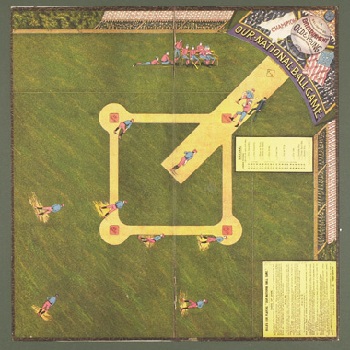 |  |
Many folks we've encountered who played dice baseball in their own childhood or
adolescence remember playing a version very similar to the one we knew. That may lend
some credence to our guess that a popular commercially-produced game had provided the
basis for so many homebrew versions of dice baseball. Dozens of other versions can be
found on the internet, and in any number of books titled something like "Games for Kids"
and "Games You Can Make at Home" -- but the traditional, most widespread version has
become curiously tough to locate. Full marks, to be sure, to those many clever boys who
devised a dice baseball game on their own without having had the benefit of an older
game taught to them by a family elder, and we'll include several such inventions below.
But it's the versions of dice baseball handed down through one or more generations, and
the stories they hold, that most intrigue us.
Most "folk-game" variations of dice baseball use two standard dice, but we should
mention that while most entries on the 130-year-long long list of commercially-produced
dice baseball games likewise employ a standard pair, there have been and are others that
use a single die, some that use three, and still others have involved four, six, and more,
or require ten-sided or 20-sided dice or other "special," uniquely-marked dice, rather
than the standard "d6" with which everyone's familiar. And not only the commercial
games, but also a few homebrew versions and several variations available in print or
on the internet involve considerably more complex and detailed rules, edging into the
realm of simulation games with results individualized for each player in the line-up.
We're concerned here with only "basic" dice baseball -- a simple set of rules, no more
than three dice, and uniform, generic odds for all players. A "starter" game, if you will.
One last thing before we roll the dice: any version of dice baseball -- or for that
matter, any tabletop baseball game regardless of the method of play -- presents a great
opportunity for adults to teach kids the strategies and subtleties of baseball, and for kids
to exercise their underutilized imaginations, rather than having the images and results
spoon-fed to them by computerized graphics. We strongly recommend, for you adults
who'd like to teach kids how to play any tabletop baseball game, you first take them to
see an actual ballgame -- any level of play, major leagues, minors, the local high school
team -- or at least watch a game on TV with them, and see if it generates some interest
in them. If it does, then help them picture the action in their minds when you play the
tabletop version. Muster up your best Vin Scully impression! Be the play-by-play man,
announce it and describe the action as play proceeds. A little hand-drawn playing field
with coins or buttons to indicate baserunners helps them visualize the play as well.
The kids' line-ups and yours are limited only by the imagination, too. You and they
can insert the names of major league stars past or present, or those of the players on the
local minor pro team, or your kid's Little League teammates, or create fictional players
out of whole cloth (still more imagination required there, and we think more fun).
If you know how to score a game (another lost art -- maybe we should do an article
on that) and want to keep a proper scoresheet to record the result of every at-bat (yesss!),
rather than just tallying the runs in each inning, it's easy enough to draw your own, or
you can just do an internet image search for "baseball scoresheet" and find hundreds of
different templates you can print out. Seriously, how else can you know who's up next?
All right, we've kept you waiting long enough. Without further ado, then, we're going
to present several variations of dice baseball for you right here, with a little additional
annotation. First we'll trot out just a few of the earliest commercially-produced games --
a selection of the most popular and most noteworthy -- and show you how they worked.
Then we'll present a variety of homebrew versions, as described to us by the guys who
actually played them -- and along with that, we'll provide some of their reminiscences
of playing and developing more complex versions of dice baseball. And we'll conclude
with a sampling of dice baseball games we've seen on the internet.
For each of them, we'll give you the total of hits and outs to give you an idea of
how much offence each game affords. We feel a game with an overall batting average
between about .260 and .290 provides the most realistic and satisfying results, so
keep that in mind when choosing a game to try.
Let's roll! |

|
|
1 -- single 2 -- double 3 -- triple 4 -- home run O -- three outs O -- three outs ------------------ 4 H, 6 O -- .400 |
|
1 / 1 double 1 / 2 single 1 / 3 single 1 / 4 single 1 / 5 base on error 1 / 6 base on balls 2 / 2 strike 2 / 3 strike 2 / 4 strike 2 / 5 strike 2 / 6 foul out 3 / 3 out at 1st 3 / 4 out at 1st 3 / 5 out at 1st 3 / 6 out at 1st 4 / 4 fly out 4 / 5 fly out 4 / 6 fly out 5 / 5 double play 5 / 6 triple 6 / 6 home run --------------------------- 10 H, 17+ O -- <.370 |
|
|
|
 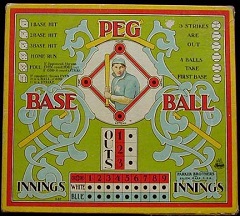
|
|
|
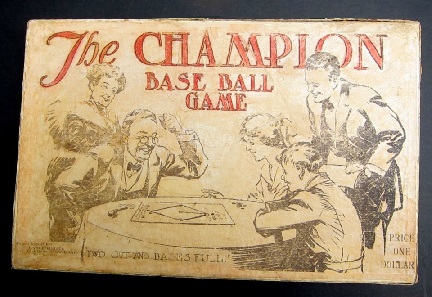 |
|
2 stolen base if runner on;
batter out if bases empty
3 strikeout
4 foul out
5 sacrifice, runners advance
if less than two out;
if two out, batter out,
no runner advance
6 runner on 1st picked off;
if no runner on 1st,
batter grounds out
7 fly out
8 single
9 double
10 triple
11 home run
12 base on balls
------------------------------------
14 H, 11-21 O -- .400-.560
|
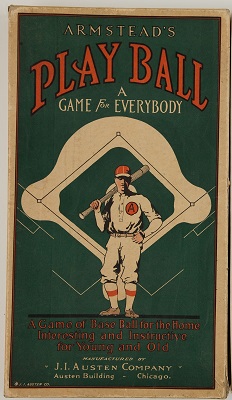
|
|
1 / 1 single 1 / 2 strike 1 / 3 hit by pitch 1 / 4 ball 1 / 5 out 1 / 6 out 2 / 2 single 2 / 3 strike 2 / 4 out 2 / 5 out 2 / 6 out 3 / 3 single 3 / 4 strike 3 / 5 ball 3 / 6 out 4 / 4 double 4 / 5 out 4 / 6 single 5 / 5 triple 5 / 6 out 6 / 6 home run ------------------ 8 H, 16 O -- .333 |
|
|
|
|
1 / 1 strikeout
1 / 2 out
1 / 3 out
1 / 4 out
1 / 5 bunt single
1 / 6 out, runners advance
2 / 2 double
2 / 3 single
2 / 4 single
2 / 5 hit by pitch
2 / 6 out, runners advance
3 / 3 triple
3 / 4 fly out
3 / 5 fly out
3 / 6 fly out
4 / 4 double play, batter and
most advanced runner out
-- if bases empty, strikeout
4 / 5 base on balls
4 / 6 strikeout
5 / 5 double play, two most advanced
runners out, batter safe --
if only one runner or none,
strikeout
5 / 6 foul out
6 / 6 home run
---------------------------------------------
9 H, 23 O -- .281 |
And there we're going to cut short the parade of early commercial dice games. There were, of course, many others we've left out, but the games above were among the earliest and either most influential or best designed. Now, though, it's time to move on to the real point of this exercise -- showcasing some of the many homebrew games undoubtedly derived from those early commercial efforts... and, we hope, encouraging you to give one or two of them a whirl, and teaching them to some young baseball fan of your acquaintance... |
|
|
|
|
|
1 / 1 home run
1 / 2 single *
1 / 3 out -- batter out if bases empty;
double play if runner(s) on base,
most advanced runner and batter out
1 / 4 out
1 / 5 ball
1 / 6 strikeout
2 / 2 base hit * -- roll both dice again:
if total is 8 or lower, single;
if total is 9 or higher, triple
2 / 3 out
2 / 4 out
2 / 5 out
2 / 6 out
3 / 3 double *
3 / 4 ball
3 / 5 ball
3 / 6 strike
4 / 4 single *
4 / 5 strike
4 / 6 strike
5 / 5 base on balls
5 / 6 strike
6 / 6 ground ball -- roll both dice again:
if total is 6 or lower, out;
if total is 7 or higher, base on error
------------------
6 H, 15 O -- <.286 |
|
|
2 - triple
3 - double
4 - single (if 2/2, any runners
advance two bases)
5 - out
6 - out (if 3/3, base on error)
7 - strike out
8 - out (if 4/4, double play,
most advanced runner out)
9 - out (if 4/5, sacrifice fly)
10 - walk
11 - single
12 - home run
---------------------------
9 H, 23-24 O -- ~.281
|
We posted at the esteemed Net54 Baseball forum, asking the baseball fans, historians, and memorabilia collectors there what experiences and memories they had with dice baseball, and what versions of the game they played. |
Net54 |
We were gratified to receive a number of detailed responses, and we now present just a sampling of those here... |
|
|
|
1 / 1 single
1 / 2 strikeout
1 / 3 out *
1 / 4 out *
1 / 5 out *
1 / 6 single
2 / 2 double
2 / 3 out *
2 / 4 out *
2 / 5 single
2 / 6 out *
3 / 3 triple
3 / 4 single
3 / 5 out *
3 / 6 out *
4 / 4 home run
4 / 5 out *
4 / 6 out *
5 / 5 walk
5 / 6 out *
6 / 6 double play /
sacrifice fly
---------------------------
10 H, 24-25 O -- ~.290
* fielder's choice
if runner(s) forced
Runners advance only
as far as forced.
No base-stealing.
|
|
1 / 1 home run
1 / 2 double
1 / 3 single
1 / 4 pop out
1 / 5 ground out (double play
if a force available)
1 / 6 strikeout
2 / 2 single
2 / 3 pop out
2 / 4 ground out
2 / 5 strikeout
2 / 6 ground out
3 / 3 single
3 / 4 strikeout
3 / 5 ground out
3 / 6 fly out
4 / 4 walk
4 / 5 fly out
4 / 6 fly out (sacrifice fly
if runner on 3rd)
5 / 5 base on error
5 / 6 single
6 / 6 triple
---------------------------
10 H, 24-25 O -- ~.290
Runners advance only as far
as forced. No base-stealing.
|
Interesting thing to note, perhaps, about the last two games described above: despite differences all throughout in what each throw of the dice indicates, the hit and out totals match exactly -- in two games both from roughly the same general region. Eh, maybe just coincidence. |
|
|
|
|
It was only in the summer of 2019, long after we wrote and compiled the original version of this article, that we found another memory of homebrew dice baseball written long before -- this 2007 reminiscence (including rules of play!) from someone on the staff of WNST sports-talk radio in Baltimore: |
Dice Basebell -- A Memory |
Somehow the 4-6 result has been omitted from the results list there, and since what's shown produces an overall .344 BA (11 hits, 21 outs), we'd strongly recommend making 4-6 an out if you're going to try to play it. Nonetheless, a charming walk around the basepaths of memory lane, thanks to that anonymous WNST intern. There are still more versions of dice baseball to be found on the internet, although one of the reasons we put this page together is because most of those other versions are, in our opinion, markedly inferior to the version we played and to those described by the contributors above -- and mainly that they have a sterile, arbitrarily-concocted feel, devoid of any sense of dice baseball's heritage and oblivious to the vital element of imagination that actually makes any version of the game, y'know, fun. Several of these other internet versions are presented as lessons or "fun exercises" in math, assembled by math teachers who seem to have little grasp of either baseball or math (our long-ago experiences as students leave us unsurprised). Nonetheless, merely in the interest of a more complete presentation, we relay a few of the least awful or most unusual versions here... |
|
Each player rolls one die. The total shown by the two dice gives the result. |
|
|
|
|
|
|
One last version of dice baseball must be mentioned here, although copyright concerns, as well as its relatively lengthy rulebook, filled with specifications on baserunner advancement, dissuade us from presenting it. That game, though, is semi-legendary -- titled simply "Dice Baseball," it's a chapter in The Second Fireside Book of Baseball, the thoroughly excellent 1958 anthology edited by Charles Einstein. The game is the creation of Einstein, writing rather coyly under his "D. J. Michael" pseudonym. Ask your local library to obtain a copy if they don't have it on their shelves -- it's a fine and worthwhile read. There ya go. A little history, a little nostalgia, and, hopefully, somewhere in that mix, the recipe for some fun you can have with your kids or your grandkids or your friends or all by yourself. Give one a try! And if it doesn't satisfy, pick one that yields a different proportion of results and try that. And of course, you're totally at liberty to customize to your own taste any of the systems presented and alter what any roll of the dice means. Make it your own! Make it a tradition. |
|
|
